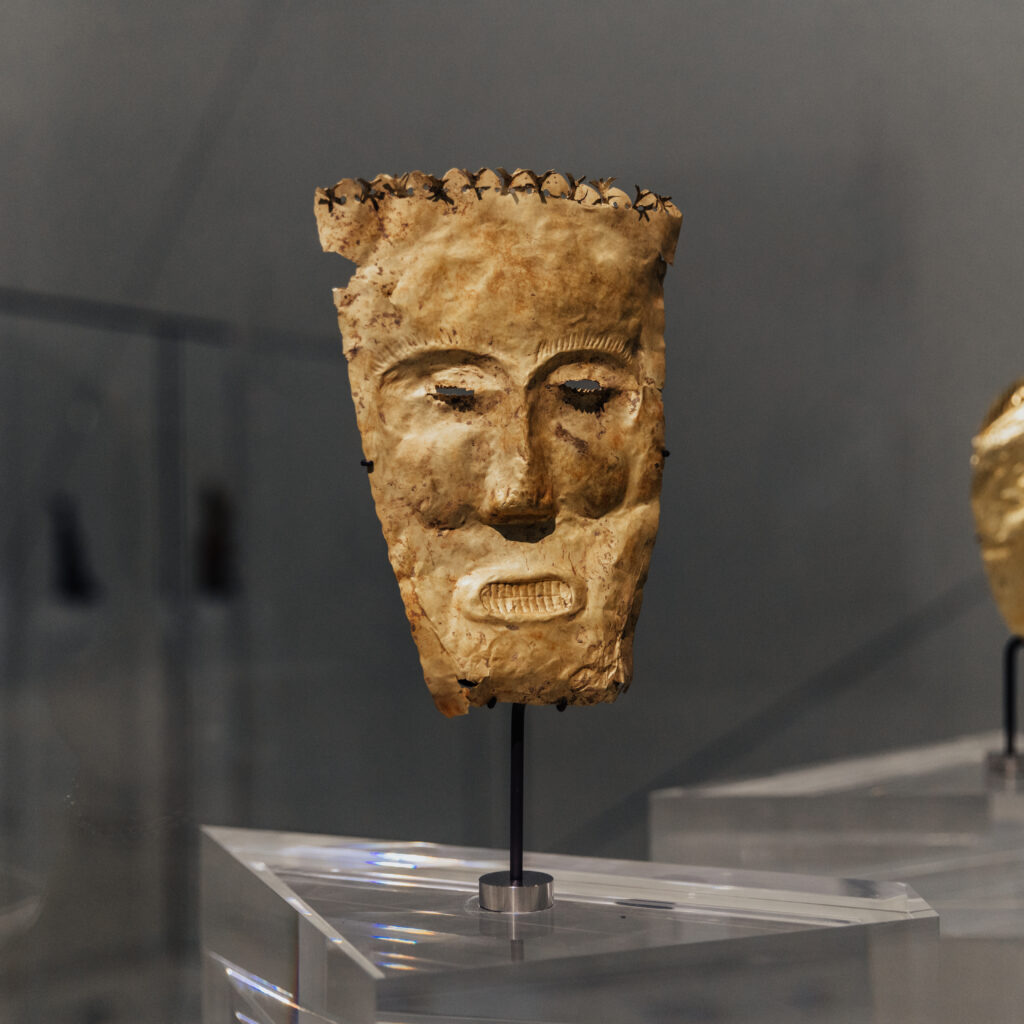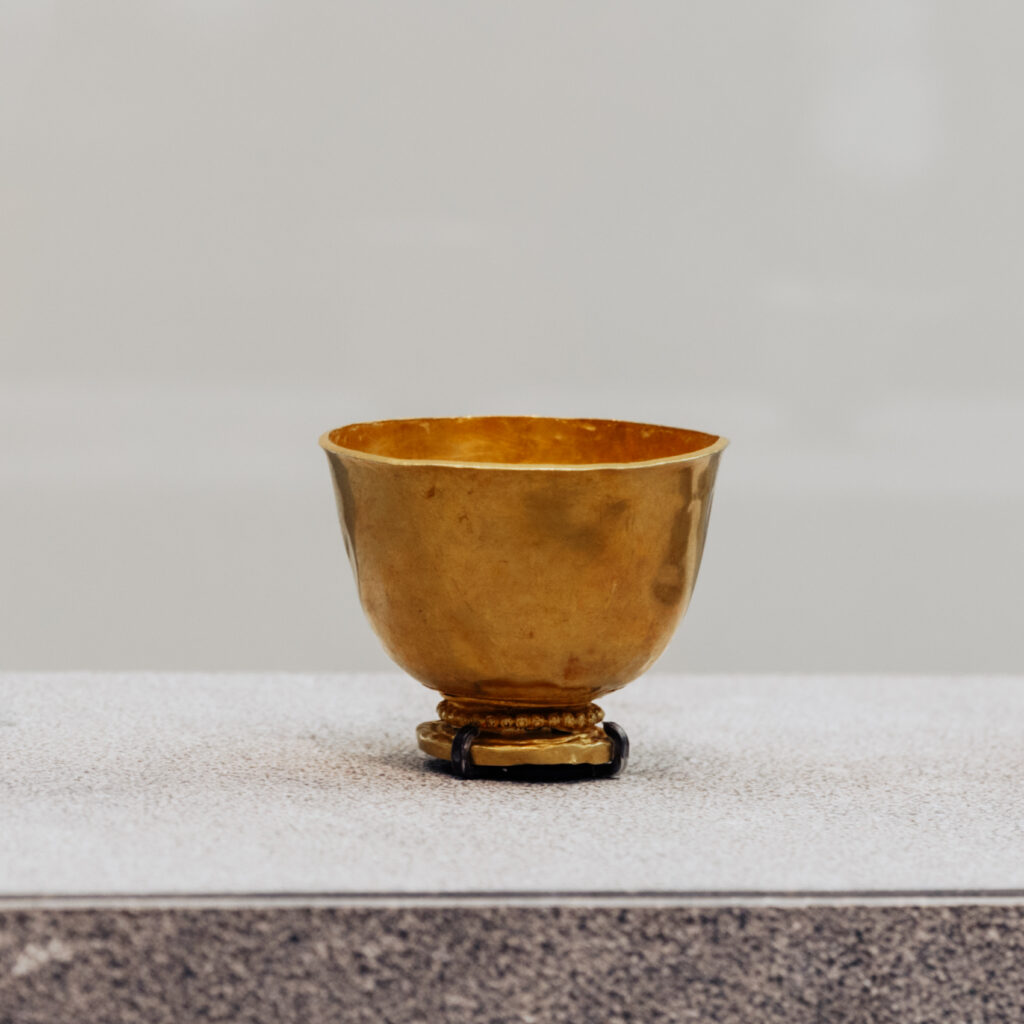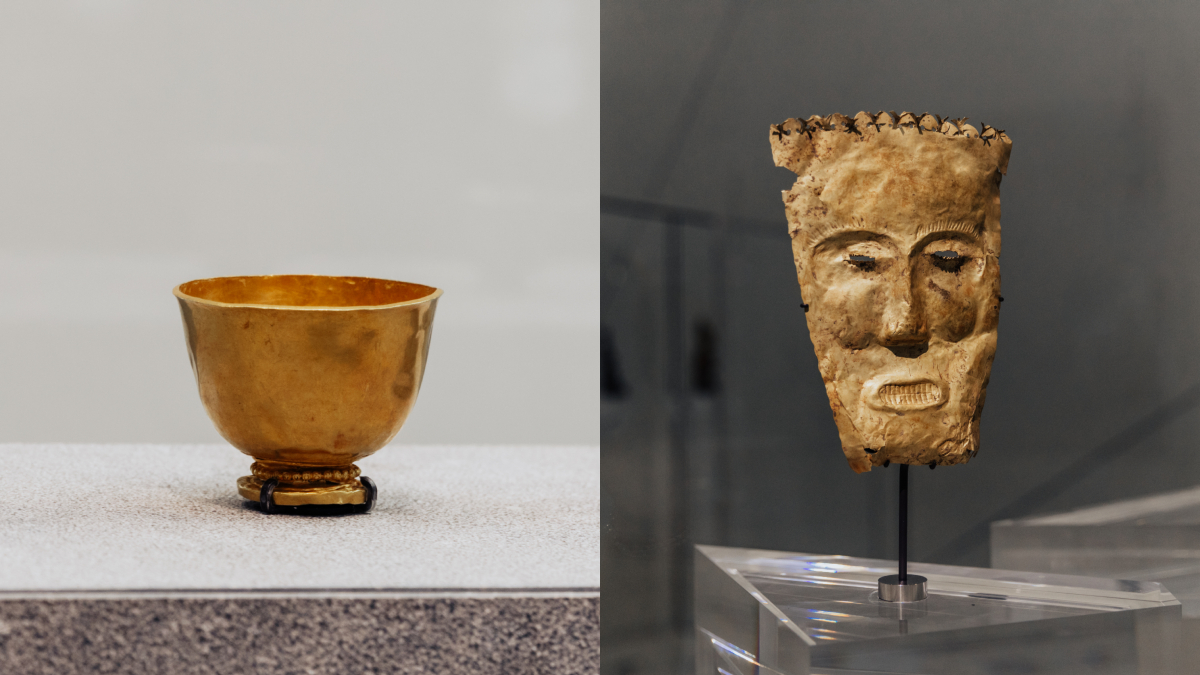The Ayala Museum’s partnership with the Louvre Abu Dhabi represents a significant milestone in showcasing Filipino cultural heritage on a global platform. In an exclusive email interview with The Global Filipino Magazine, Aprille P. Tijam of the Ayala Museum delves into the importance of this collaboration, the selection process for the exhibited pieces, and the broader impact of Filipino visual art on the world stage.
The collaboration between Ayala Museum and Louvre Abu Dhabi began in 2022 and has recently been extended until June 2025. Tijam explains that this partnership is crucial as it highlights the shared cultural narratives between the Philippines and other countries.
“The Ayala Museum was invited to join this dialogue of objects with shared characteristics,” says Tijam.
The museum loaned a funerary mask from Butuan, Agusan del Norte, and a gold cup from Nabua, Camarines Sur, to the Louvre Abu Dhabi’s Permanent Galleries.
Showcasing Filipino art internationally
When asked about the significance of displaying Filipino visual art on an international platform, Tijam emphasizes, “The stories that we hold as Filipinos and as a nation are always worth telling.”
She believes that participating in international exhibitions allows Filipino artworks to engage in a global conversation, showcasing the unique cultural heritage and identity of the Philippines.


Ayala Museum plays a pivotal role in preserving and promoting Filipino culture and heritage. According to Tijam, the museum engages in various activities, including exhibitions, preventive conservation, educational programming, and legacy building.
“Our efforts ensure that the museum’s fine arts, ethnographic, archaeological, and historical collections are well-preserved and accessible to a wide audience,” Tijam explains.
The selection of the funerary mask and gold cup for display at the Louvre Abu Dhabi was meticulous.
“The Louvre aimed to present the diversity of cultures and the importance of cultural materials in Asia,” Tijam notes.
The funerary mask was chosen for its similarities to other gold masks from Peru and the Middle East, illustrating the “conquering of death and perpetuation of eternal existence in the afterlife.”
The gold cup, displayed alongside bowls from China and Korea, highlights the shared functionality and design inspirations across cultures.
Impact on the global perception of Filipino art
Tijam is optimistic about the global perception of Filipino art. She believes that sharing these objects through international exhibitions fosters a greater appreciation for Filipino artistry, which is deeply rooted in the country’s traditions. “This highlights the Philippines’ historical interactions with different cultures through trade and exchanges,” Tijam states.
Through these exhibitions, Ayala Museum aims to instill pride in Filipino ancestry and cultural heritage, especially among the Filipino diaspora worldwide.
“We hope that visitors to the Louvre Abu Dhabi will gain a deeper understanding of Filipino culture and artistic expression, appreciating the intricate craftsmanship and historical significance of the exhibited pieces,” Tijam shares.






